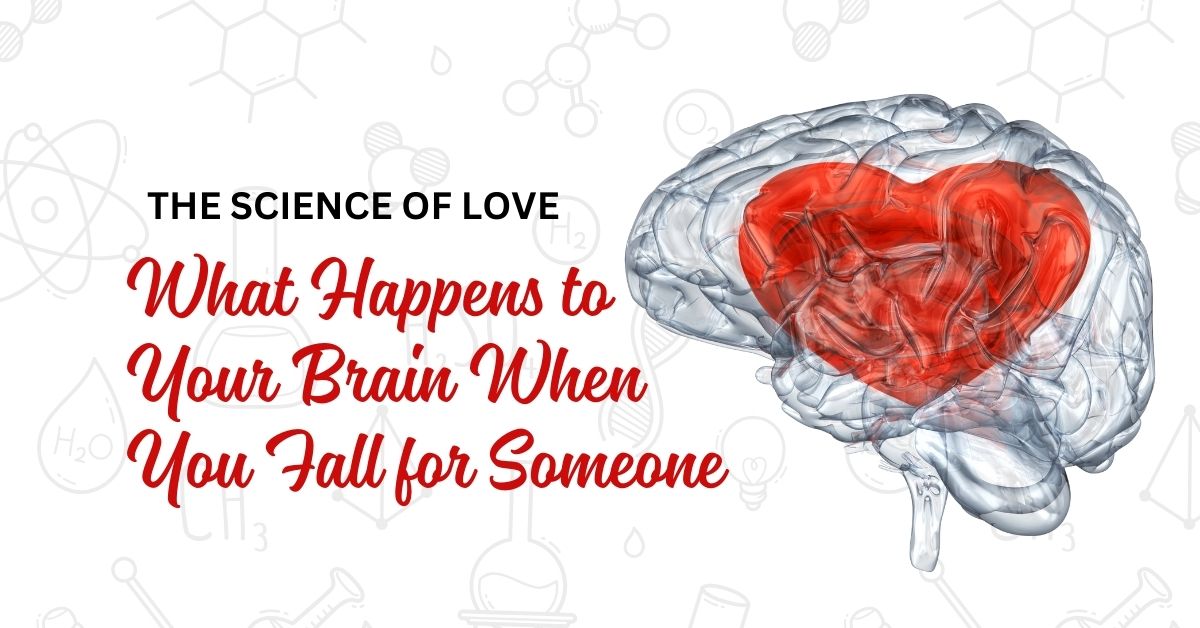
The Science of Love: What Happens to Your Brain When You Fall for Someone
Falling in love is one of life’s great adventures, and it can happen at any age. For mature singles reentering the dating scene, the experience might feel both thrilling and mysterious. Have you ever wondered what’s really going on in your mind and body when you’re swept off your feet? The answer lies in the science of falling in love—a fascinating look at why our feelings light up when we meet someone special.
Understanding the science of falling in love doesn’t spoil the magic—it actually shines a light on the wonderful ways our brains and bodies react to love. By learning about the chemicals, hormones, and brain activity involved, you can move forward in your journey with curiosity and confidence. Let’s explore the latest insights, especially for those interested in finding love later in life.
The Science of Falling in Love: Behind the Curtain
You may think falling in love is all about hearts and butterflies, but it’s deeply rooted in biology. Scientists have found that the brain chemistry and love we feel during those first encounters is not just in our imagination—it’s a potent mix of natural responses.
Key facts about the science of falling in love:
- The same love “switches” in the brain light up whether you’re 18 or 80.
- Brain scans show nearly 12 brain regions become active during romantic love.
- Over 80% of cultures studied worldwide have references to romantic love.
- Harvard research suggests the primary “falling in love” chemicals peak for about 18 months before shifting to deep, long-term bonds.
If you’re reentering the dating world, it’s reassuring to know you have just as much “love hardware” in your brain as anyone else!
Dopamine Delight: Your Brain’s Reward System
Ever felt that rush of excitement just thinking about a new love interest? That’s dopamine at work. Dopamine is nicknamed the “feel-good” chemical, and it’s released in high amounts when you start falling for someone.
What happens during this phase?
- Boost of energy: Suddenly, you have pep in your step.
- Focused attention: You can’t stop thinking about them.
- Intense motivation: You want to learn more and spend time together.
- Heightened pleasure: Little gestures and smiles feel extra special.
A study by Stony Brook University found that people newly in love showed brain patterns similar to those who had used a stimulant! This dopamine rush can be exhilarating and is a signature part of the science of falling in love. And don’t worry—it doesn’t fade with age. Mature singles experience this wave of joy just as powerfully.
The “Cuddle” Connection: Oxytocin and Vasopressin
As the romance grows, new players step into the spotlight—oxytocin and vasopressin. You might have heard oxytocin called the “cuddle hormone.” Why? Because it’s released in big doses during cuddling, hugging, holding hands, and even during meaningful conversations.
Here’s what these hormones do:
- Help you build trust and feel emotionally secure
- Deepen feelings of attachment and comfort
- Lower stress and anxiety
Vasopressin is another key hormone. It supports long-term commitment and pair bonding. Studies in love and neuroscience show these chemicals are essential for forming the deep bonds that keep couples close for the long haul.
You don’t have to be in your twenties for these hormones to work—studies show that the reward system and bonding mechanisms remain strong no matter your age or life stage.
How the Science of Falling in Love Changes Your Brain
When you start falling for somebody, your brain acts like an orchestral conductor, turning up some parts of itself and quieting others. For example, the amygdala, which controls fear and anxiety, becomes less active. This is why you might feel braver, more open, and ready to share your feelings, even if love hasn’t always been smooth sailing in the past.
What does this mean for mature singles?
- You may find it easier to take healthy risks in relationships.
- You might feel safer opening up and connecting emotionally.
- Your brain is helping you build trust with your new partner.
Research in brain chemistry and love shows that these shifts are totally normal. It’s your brain’s way of helping you say “yes” to new connections and to embrace the uncertainties of romance with hope and optimism.
Serotonin and the Obsession Stage
It’s common to find yourself thinking about your new flame day and night. The science explains why: serotonin levels can actually decrease in the brain during early love. Believe it or not, studies show these lower serotonin levels are similar to what’s seen in people with obsessive-compulsive tendencies!
How does this affect you?
- You become preoccupied with your partner.
- You might replay special moments or conversations in your mind.
- Daydreaming and longing become a normal part of your routine.
This phase might feel intense or even a bit overwhelming, but it’s part of the natural progression of connection. These feelings generally settle down as the relationship progresses, giving way to deeper attachment.
Tips to stay grounded:
- Lean on friends and hobbies for balance.
- Keep communication open and honest.
- Trust the process—these feelings are temporary and healthy.
In the science of falling in love, this “obsession” is a powerful way to focus attention and energy on building the bond.

Long-Term Love: From Passionate to Compassionate
As your connection matures, something beautiful happens: the initial highs give way to a sense of calm and enduring partnership. The sparks of dopamine and the intensity of early romance are replaced by comfort, stability, and trust—thanks to oxytocin and vasopressin.
What’s different about long-term love?
- You feel emotionally safe and truly known.
- There’s less day-to-day nervous excitement, more deep appreciation.
- Challenges in life are easier to face together.
Analysis from brain imaging studies—part of the growing field of love and neuroscience—shows that couples married for decades still have active “love centers” in their brains. The areas supporting long-term attachment (such as the ventral pallidum) are more engaged, which means devoted, stable love is not just possible, it’s the norm for many.
Benefits of mature, long-term love:
- Better health and longevity
- Deeper emotional and social support
- Higher levels of reported life satisfaction
It’s proof that the journey doesn’t end with the honeymoon phase and that brain chemistry and love continue to evolve in fulfilling ways.
Embracing the Science of Falling in Love—At Any Stage
If you’re reentering dating, remember: your brain is wired for love at every age. The science of falling in love supports what we’ve always known in our hearts—love is ageless, and the brain’s chemistry is as ready for romance at 60 as it was at 20.
Takeaways to encourage you:
- Brain chemicals like dopamine and oxytocin work at every age.
- Vulnerability feels easier because your brain is helping you.
- Long-term partnership brings its own kind of “high.”
- Obsessive early feelings are normal—and temporary.
The latest findings in love and neuroscience suggest that embracing new love, even after setbacks, is one of the healthiest things you can do. Whether you’re seeking companionship or deep romance, your journey is worth the leap.
So, next time you feel those butterflies or find your thoughts drifting to someone special, know it’s more than imagination—it’s biology, brain chemistry, and love in action.











